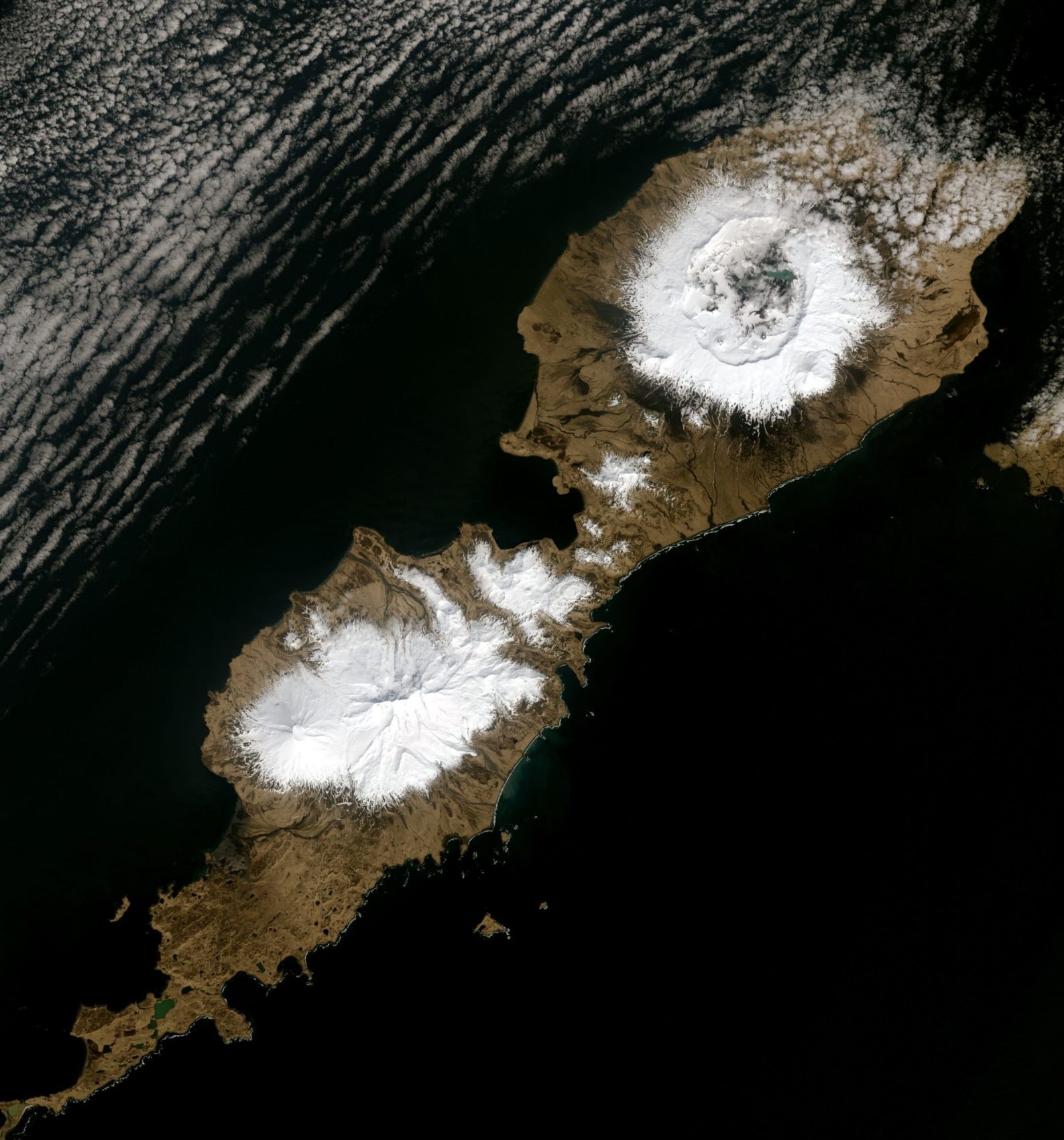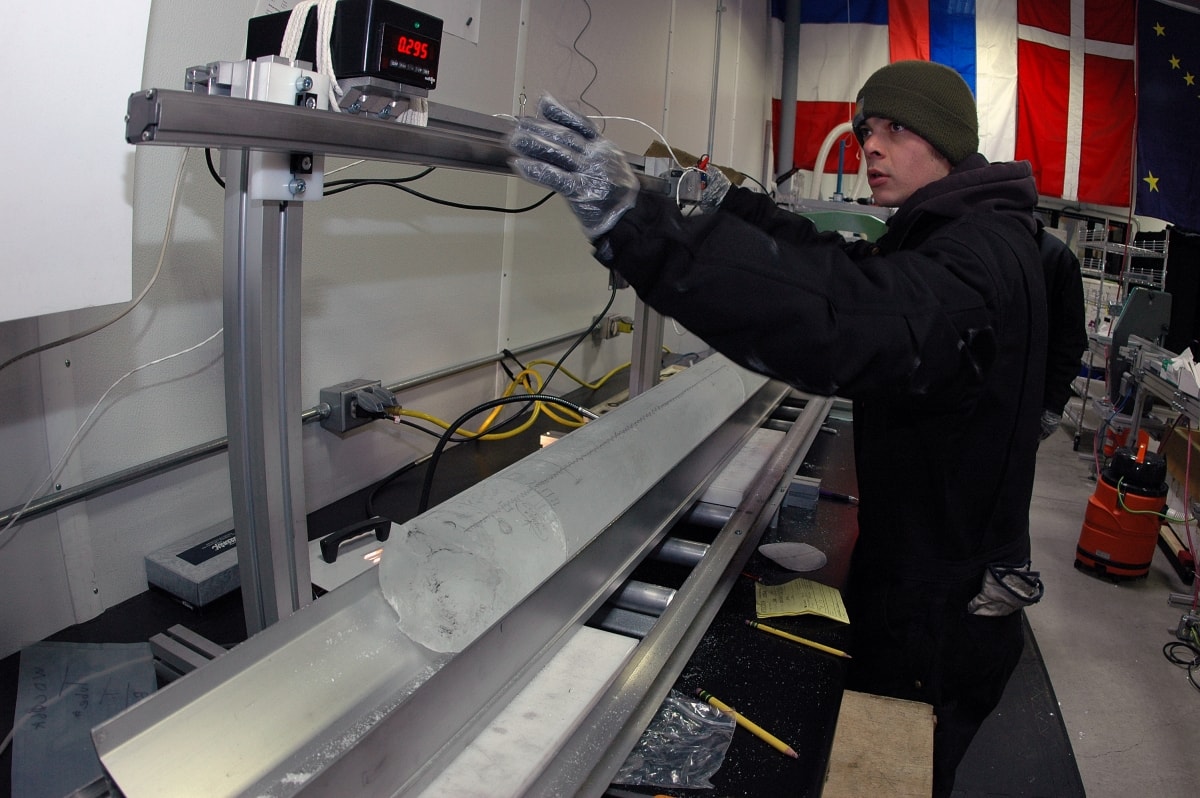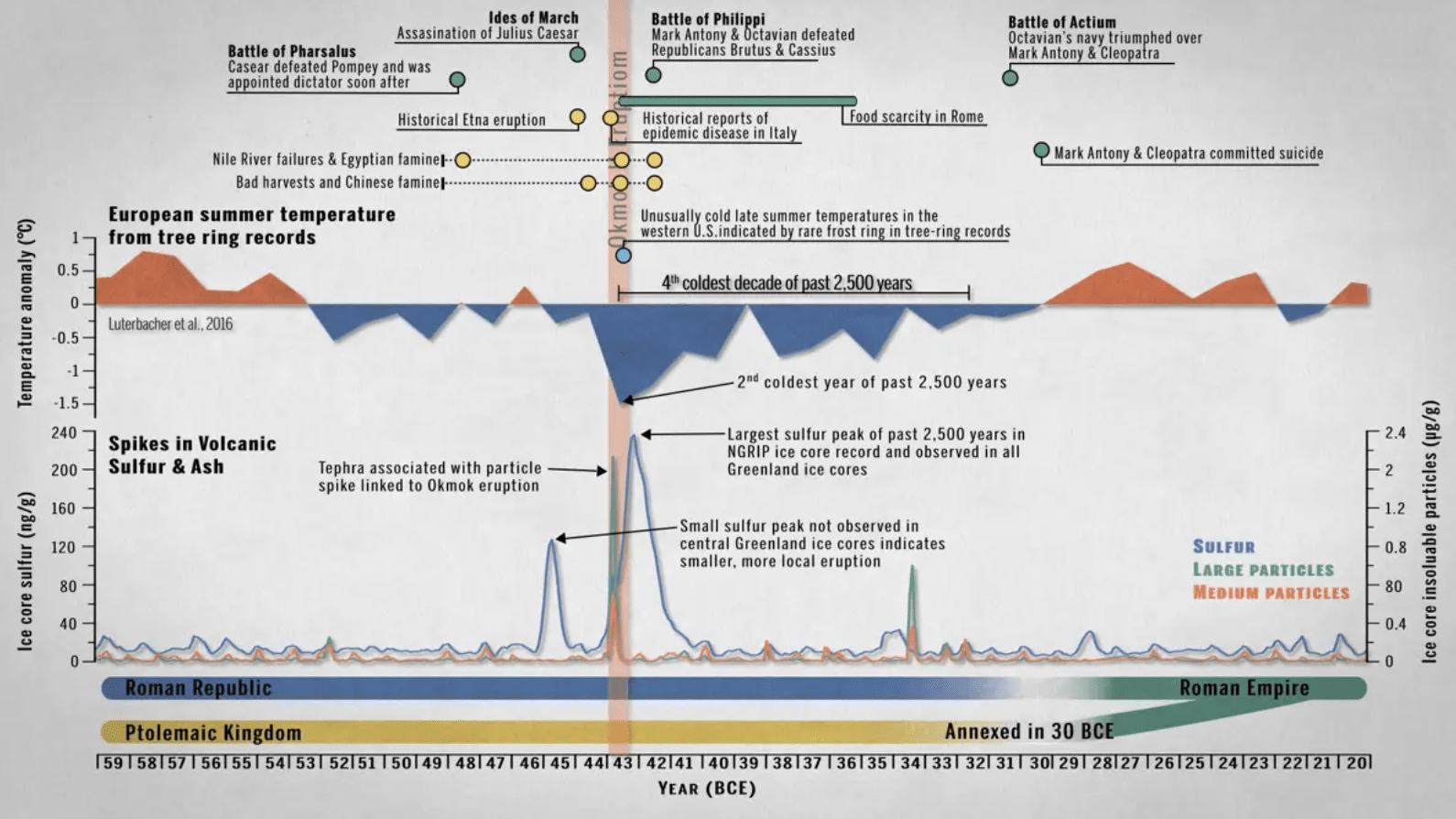
An eruption of Alaskan Volcano over 2,000 years ago is being linked to extremes cold in Ancient Rome. A new study from the Desert Research Institute demonstrated through the analysis of volcanic ash found in the Arctic ice cores that a period of extreme climate in the Mediterranean was provoked by the eruption of Alaska’s Okmok Volcano in 43BCE.
Early next year following Julius Caesar’s death in 44 BCE, Okmok Volcano in the Aleutian Islands blew its stack and triggered unusual climate, crop failures, widespread famine, and disease. According to their findings, the two years following the Okmok II eruption were some of the coldest in the Northern Hemisphere in the past 2,500 years, and the decade that followed was the fourth coldest.
The volcano’s northern location meant that sunlight-blocking particles could rise into the low-lying Arctic stratosphere, where they would spread easily throughout the Northern Hemisphere generating an extremely cold climate.

The discovery was initially made last year in DRI’s Ice Core Laboratory when McConnell and Swiss researcher Michael Sigl at the University of Bern happened upon an unusually well-preserved layer of tephra in an ice core sample and decided to investigate.
From recovered spikes in light-blocking sulfate particles on the ice core drilled in the 90s and the new measurements made on ice cores from Greenland and Russia, scientists were able to clearly delineate two distinct eruptions. On the first hand a powerful but short-lived, relatively localized event in the 45BCE, and in the other a much larger and more widespread event in the early 43BCE with volcanic fallout that lasted more than two years in all the ice core records.
The researchers then conducted a geochemical analysis of the tephra samples from the second eruption found in the ice, matching the tiny shards with those of the Okmok II eruption in Alaska. Comparing the chemical fingerprints it was very clear that the source of the 43 BCE fallout in the ice was the Okmok II eruption.

Climate models suggest that seasonally averaged temperatures may have been as much as 13oF below normal during the summer and autumn that followed the 43 BCE eruption of Alaskan Volcano Okmok II. With summer precipitation of 50 to 120 percent above normal throughout Southern Europe, and autumn precipitation reaching as high as 400 percent of normal.
The research also helped to understand the history way better. Volcanic activity helped to respond to the sky phenomena reported by the Mediterranean sources interpreted as signs or omens. These wet and extremely cold conditions during the agriculturally important spring through autumn seasons probably reduced crop yield. And the belief that the climate affected by the Alaskan Volcano eruption played an undeniable role in the fall of the Roman Republic and the Ptolemaic Kingdom.